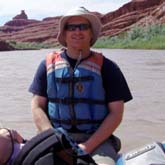Summary
This project will develop a new interdisciplinary partnership between connectivity ecology (Levin at SIO), metal isotope geochemistry (Anbar and Gordon at ASU), and paleoclimatology (Herrmann at ASU) to identify new proxies for ocean acidification that can be used to assess pH exposures in living organisms and, potentially to interpret the geologic record. The investigators hypothesize that the isotopic composition of larval calcium carbonates reflects changes in seawater chemistry driven by ocean acidification and, in some instances, with associated decline in oxygen levels. The large extent to which these two parameters vary in concert in the modern and past ocean (and thus have joint influence), and the extent to which they may be uncoupled by anthropogenic CO2 inputs, merits considerable attention. Thus, the integration of pH and oxygen in proxy development would be an important advance.
The focus of this project is on proxy development to determine pH exposure history for living organisms in their larval state, and will center on calcium, boron, and uranium isotopes as well as multi-elemental fingerprints. For this project, the investigators will target open coast, front bay and backbay mytilid mussel species, each living naturally under a different pH regime, and statoliths of encapsulated market squid larvae from the open shelf. Larvae with known pH, oxygen and temperature exposure histories will be obtained from (1) laboratory larval rearing experiments that manipulate pH and oxygen and (2) in situ out planting of lab-spawned larvae in larval homes onto existing moorings where pH, T and oxygen are being monitored. Analyses will employ SIMS (for del 11B), multicollector (for del 44Ca, del 238 U), and laser ablation ICP-MS (targeting B, Cu, U, Pb, Mo, and a suite of additional pH- and redox-sensitive trace elements). Multivariate statistical tools will define ability to detect pH-induced signatures and to determine species or taxon-specific vital effects. The investigators are exploring proxies for invertebrate larvae that are untested in the context of acidification geochemistry. Targeting larvae is critical as many marine organisms produce larval carbonate structures and these stages may be most affected by ocean acidification. The retention of larval shell and statoliths after recruitment may ultimately allow us to test the importance of larval pH and O2 exposure to survival and population persistence. An ability to assess past exposures through geochemical proxies will provide information about relative pH tolerances and ecosystem-level change in response to changes in the ocean's carbonate chemistry.
This project will: (1) engaging young scientists in new collaborations (2) involving underrepresented students through UC summer diversity programs and (3) conveying the science to students via UCSD IGERT courses in the program Global Change, Marine Science and Society, as well as via courses taught by Levin, Anbar and Herrmann. Translation of ecological results to the fields of marine geochemistry and paleoclimatology (and back) will provide the seed for future collaboration and advances.



 Lisa Levin
Lisa Levin
 Ariel Anbar
Ariel Anbar
 Gwyneth Gordon
Gwyneth Gordon
 Achim Herrmann
Achim Herrmann